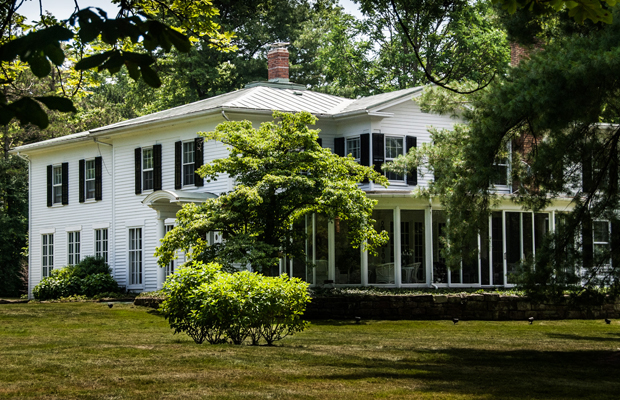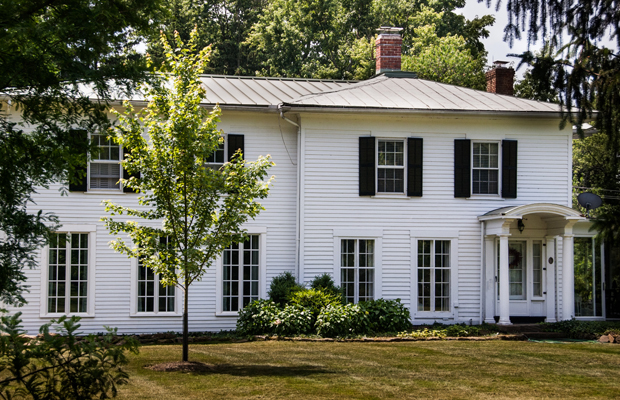Thurs, Nov 13, 7:00pm at Barlow Community Center. Dr. Megan Shaeffer discusses the history and archaeology of Wood Hollow Metro Park
Jeremiah Brown House


The land was originally owned by Stephen Thompson Sr., then willed to Thompson Jr. and later willed to Jr.’s sons Alonzo and Amos, who parceled acreage. The white clapboard farmhouse was built by Noah Carter (half-brother of John Brown) for Jeremiah and wife, Abi, who actually bought the property, and daughters Lucy (Lucy Brown Clark) and Francis. The walls are brick noggin construction (brick between lath and plaster).
The original front porch was removed in 1861, but the French doors remain. The front of the house has retained its original style, but with restoration, some additions were added in 1910. The basement is constructed from large sandstones in a continuous foundation. Outbuildings are from the early 1900s. A henhouse on the property was converted into an office for Mr. Stanley Marks, owner in 1980.
Tradition has it that John Brown stored guns for the Kansas anti-slavery campaign in a barn on the property, not the existing 1910 barn. Tradition also says a dry cistern under the present family room (originally the summer kitchen) was a station on the Underground Railroad. The runaway slaves were probably let out of the cistern from steps under the front porch.
Jeremiah Root Brown, son of Owen and Sally Brown, was born in 1819 in Hudson. Being a restless person, he left his home and family in 1861 to pursue many business opportunities across the country, but returned home to Hudson in 1872 with tuberculosis. Feeling better after a year, he went to California, dying in 1874 in Santa Barbara.